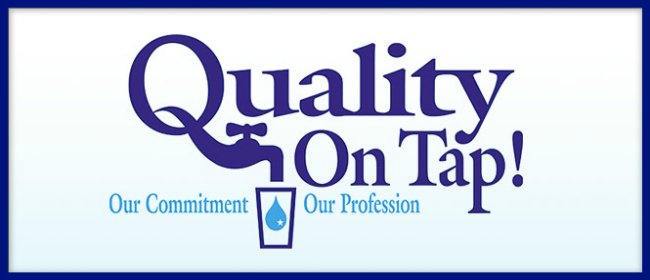Beginning March 17 and continuing through April 21, 2025, Eastern Pines Water Corporation (EPWC) will temporarily change the disinfectant used in the water treatment process. EPWC will be using chlorine rather than chloramines during this five-week period.
Since March 2009, EPWC has used chloramines, a mixture of chlorine and ammonia, as the disinfectant in its water treatment process. “Chloramines are an effective disinfectant and also reduce the level of byproducts that are regulated by the US Environmental Protection Agency.” “State drinking water guidelines recommend that water systems using chloramines periodically switch back to free chlorine (Chlorine alone) for a minimum of four weeks. This brief, scheduled change in disinfectant is a standard water-treatment practice to keep water mains clean and free of potentially harmful bacteria throughout the year.”
During the temporary switch to free chlorine, customers may notice a slight change in the taste or smell of their tap water. The mild chlorine taste and smell are normal and pose no health risk. Most customers will not need to take any precautions as the water remains safe to drink and is treated according to both state and federal standards. People and businesses that normally take special precautions to remove chloramines from tap water, such as dialysis centers, medical facilities, and aquatic pet owners, should continue to take the same precautions during the temporary switch from chloramines to free chlorine.
Q & A
Temporary Switch to Free Chlorine
Beginning March 17 and continuing until April 21, 2025, Eastern Pines Water Corporation (EPWC) will temporarily change the disinfectant used in the water treatment process. EPWC will be using chlorine rather than chloramines during this five-week period.
Why Would EPWC Convert from Chloramines to Free Chlorine?
This brief, scheduled change in disinfectant is a standard water-treatment practice to keep water mains clean and free of potentially harmful bacterial throughout the year.
State drinking water guidelines recommend that utilities using chloramines periodically switch to free chlorine for a minimum of four weeks. The temporary use of chlorine will ensure that a high level of disinfection is maintained throughout the network of water mains and pipes that deliver your drinking water.
Free chlorine is a more aggressive disinfectant than chloramines, and this temporary change in the water treatment process denies bacteria the ability to form resistance to the usual disinfection treatment process.
Switching to free chlorine is a proactive step to ensure that we maintain optimal levels of disinfection in the water distribution system.
As always, the drinking water will be regularly monitored to ensure that the water delivered meets, or is better than, federal Safe Drinking Water Act standards.
What is Free Chlorine?
Free chlorine is a slightly stronger disinfectant than chloramines and may be used to remove more resistant bacteria and viruses that may be found in the water distribution system.
What is Chloramine?
Chloramine is a disinfectant used in drinking water to remove bacteria and viruses that can make you sick. It is made up of chlorine and ammonia. EPWC has used chloramines as the disinfectant in its water treatment process since 2009.
Why Does EPWC Use Chloramines Most of the year?
While chlorine is an effective disinfectant, using chlorine alone creates byproducts, which are regulated by the US Environmental Protection Agency. We can drastically and cost-effectively reduce byproduct levels through the use of chloramines. Chloramines are a better long-term choice because it produces lower levels of disinfectant byproducts like trihalomethanes, improves the smell and odor of water (compared to chlorine), and lasts longer in the distribution system to prevent bacterial growth.
When Will The Conversion Occur?
Beginning March 17 and continuing until April 21 (5 weeks).
Will I Notice a Difference in My Water?
Possibly. Some customers may notice a slight change in the taste and smell of their tap water. Free chlorine may have a bit of a chemical odor or smell slightly like water in a swimming pool. Each individual customer has his or her own sensitivity level to the taste and/or odor of free chlorine. Many detect no change at all. The mild chlorine taste and smell are normal and pose no health risk.
Are Free Chlorine and Chloraminated Water Safe?
Yes, both forms of chlorine are effective and safe for people and animals to drink, for cooking and bathing, watering the garden, and for all other common uses. However, precautions must be taken to remove or neutralize chloramines and free chlorine during the kidney dialysis process, in the preparation of water for fish tanks and ponds, and for businesses requiring highly-processed water. A de-chlorination procedure optimized for chloramine removal will work equally well with free chlorine.
People and businesses that normally take special precautions to remove chloramines from tap water, such as dialysis centers, medical facilities, and aquatic pet owners, should continue to take the same precautions during the temporary switch from chloramines to free chlorine.
Most customers will not need to take any precautions as the water remains safe to drink and is treated according to both state and federal standards.
- Kidney Dialysis - Just like chloramines, free chlorine must be removed from water used in kidney dialysis machines. We advise customers who are dialysis patients to call their physicians or dialysis centers if there are any questions.
- Fish Owners - Like chloramines, free chlorine is toxic to fish. Fish owners need to remove chlorine, ammonia, and chloramines from the water before use with tropical fish. Local pet stores carry water conditioners that remove chloramines and free chlorine. If customers have questions, we recommend contacting their pet store for information and detailed instructions.


 Chlorine Conversion
Chlorine Conversion